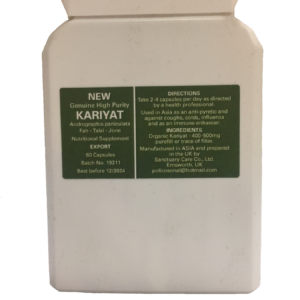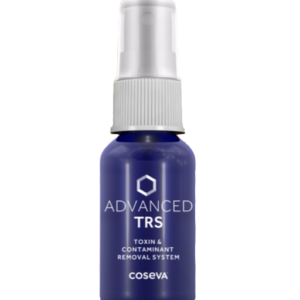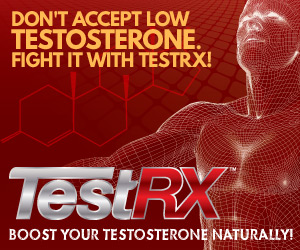The information and products on this sight are in no way linked and are not intended to treat or cure any disease. Treating and curing a specific disease is not our business nor our focus.
However when we change our lifestyle to align with that of nature and work towards health following direct protocols and taking certain supplements, more often than not, many diseases we thought would stay forever, leave, and some diseases we thought were irreversible actually reverse.
The reason for this is that nature and the human body always tend towards health. Just look around, everything that exists only exists because the odds are in favor of life, and life always emerges from every possible natural environment, no matter how inhospitable.
The human and artificial engineered environment we live in is the only unnatural thing that brings our natural defenses down and inhibits our ability and god given right to be in perfect health. The very reason we get old is because we do not learn the meditative and breathing techniques to gain complete control of our bodies regenerative plasma based capability.
— — — LEGAL NOTICE TO UNLAWFUL CENSORSHIP OF HEALTH INFORMATION — — —
Upon reading this you shall recognise the right to freedom of speech, and access to health. In a court of law evidence will be produced to refute any claim against natural health and the progression of mankind in accordance with basic human rights to information and health as delivered to us all by the human rights of every country and jurisdiction, and with god as our witness, we the people are protected by the law of god, and the law of man, common law, which is protected by the highest order; Her Majesty the Queen of England.
http://www.ohchr.org/Documents/Publications/Factsheet31.pdf
I. WHAT IS THE RIGHT TO HEALTH?
-
Key aspects of the right to health
The right to health is an inclusive right.
We frequently associate the right to health with access to health care and the building of hospitals. This is correct, but the right to health extends further.
It includes a wide range of factors that can help us lead a healthy life. The Committee on Economic, Social and Cultural Rights, the body responsible for monitoring the International Covenant on Economic, Social and Cultural Rights, calls these the “underlying determinants of health”.
They include:
Ø Safe drinking water and adequate sanitation;
Ø Safe food;
Ø Adequate nutrition and housing;
Ø Healthy working and environmental conditions;
Ø Health-related education and information;
Ø Gender equality. -
The right to health contains freedoms.
These freedoms include the right to be free from non-consensual medical treatment, such as medical experiments and research or forced sterilization, and to be free from torture and other cruel, inhuman or degrading treatment or punishment.
(Site: CHEMO, HARRP, CHEM-TRAILS, FLUORIDATED WATER OR TOOTHPASTE, MERCURY DENTAL WORK, UNAUTHORIZED GENETIC EXPERIMENTATION, GENETICALLY MODIFIED FOODS, UNAUTHORIZED USE OF RIFE-LIKE ZERO POINT TECHNOLOGY ON LARGE POPULATIONS, UNAUTHORIZED RFID CHIPPING, UNAUTHORIZED MANUFACTURE OF VIRUSES AND BACTERIA or HYBRID NANO-TECHNOLOGY INTENDED TO HARM AND TORTURE ITS VICTIMS; LYME/AIDS, MEDICAL PRACTICE OF ANY KIND THAT INVOLVES UNNATURAL CHEMICAL COMPOUNDS) -
The right to health contains entitlements.
These entitlements include:
Ø The right to a system of health protection providing equality of opportunity for everyone to enjoy the
Ø The right to prevention, treatment and control of diseases;
Ø Access to essential medicines;
Ø Maternal, child and reproductive health;
Ø Equal and timely access to basic health services;
Ø The provision of health-related education and information;
Ø Participation of the population in health-related decision-making at the national and community levels.
http://www.nesri.org/programs/what-is-the-human-right-to-health-and-health-care
Quality: All health care must be medically appropriate and of good quality, guided by quality standards and control mechanisms, and provided in a timely, safe, and patient-centered manner.
Transparency: Health information must be easily accessible for everyone, enabling people to protect their health and claim quality health services. Institutions that organize, finance or deliver health care must operate in a transparent way.
Participation: Individuals and communities must be able to take an active role in decisions that affect their health, including in the organization and implementation of health care services.
Accountability: Private companies and public agencies must be held accountable for protecting the right to health care through enforceable standards, regulations, and independent compliance monitoring.
- Article 25 of the Universal Declaration of Human Rights
- Articel 12 of the International Covenant on Economic, Social and Cultural Rights
- Article 24 of the Convention on the Rights of the Child
- Article 5 of the Convention on the Elimination of All Forms of Racial Discrimination
- Articles 12 & 14 of the Convention on the Elimination of All Forms of Discrimination Against Women
- Article XI (11) of the American Declaration on Rights and Duties of Man
- Article 25 of the Convention on the Rights of Persons with Disabilities







